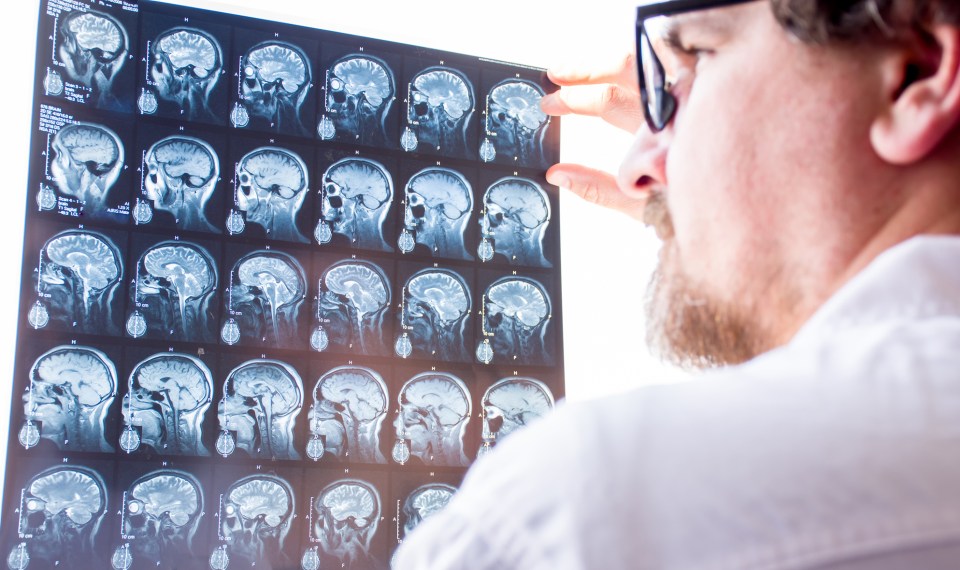Pain is a normal human experience. Living with persistent pain shouldn’t be; however, it is for many.
An estimated 25% of U.S. adults experience what is considered chronic pain, or pain that lasts more than three months. Chronic pain management is also one of the most common reasons older adults seek medical care.
“It is super common, but it’s also complicated,” said Naomi Hosking, a physical therapist and director of therapy operations at Yuma Rehabilitation Hospital, an affiliation of Encompass Health and Yuma Regional Medical Center. “Sometimes the cause of chronic pain is obvious, and sometimes there’s no direct cause. To understand how to manage it, we first have to understand what the definition of pain is.”
Understanding Pain
Pain is the result of your body perceiving a threat. When the brain senses a threat, it takes action, causing an unpleasant feeling to alert your body that something is wrong.
There are two types of physical pain: acute and chronic. Hosking said chronic pain is more complicated, as it might not be the result of a sudden injury, and the cause could be mental as well as physical or even unknown.
Acute vs. Chronic Pain
The Centers for Disease Control (CDC) defines acute and chronic pain as follows:
- Acute pain is pain that has lasted for less than a month and has a known cause, such as an injury, trauma, surgery or infection. You may have experienced acute pain from outpatient medical procedures, like a wisdom tooth extraction, or injuries, like a broken bone.
- Chronic pain is pain lasting three months or more. It can be caused by a disease or condition, injury, medical treatment, inflammation or an unknown reason.
While acute pain comes on suddenly and is more constant, chronic pain could come and go. “It doesn’t discriminate,” Hosking said of chronic pain. “Sometimes chronic pain can have obvious causes; sometimes it doesn’t. Sometimes it can be more psychological.”
Some of the more common causes of chronic pain, especially for older adults, are:
- Arthritis
- Cancer
- Injury or illness
Chronic Pain Management and PT
Since the cause of the pain is not always obvious, chronic pain management can be challenging, but there are non-pharmacological options out there, Hosking said.
If you are experiencing chronic pain, you should consider seeing a physical therapist. Physical therapists are movement experts and can help you address the cause of the pain and help you with techniques to manage it.
“If chronic pain is impacting your quality of life and restricting you from participating in daily activities or remaining independent, I feel like seeking physical therapy could be very beneficial,” Hosking said. “Pain medicine alone is not an effective approach for managing chronic pain. You need to take a multi-modal approach, which should include physical therapy.”
Physical therapy for chronic pain management could include a variety of techniques, including soft tissue massage, exercises and even ultrasound therapy. However, probably the most important part is education.
“Studies show that the more you understand how pain comes to be or how it evolves, the better you understand how to manage it,” Hosking said. “At our hospital, we have a pain stewardship committee, and we lead weekly pain education groups. Pain education is a big part of what we do and how we help address pain.”
Lifestyle Changes to Manage Chronic Pain
In addition to education and physical therapy, Hosking said some lifestyle changes could also be beneficial in chronic pain management. The following are some simple changes that could go a long way in managing chronic pain.
- Meditation. Stress can exacerbate pain. Adding meditation such as deep breathing and mindfulness exercises can help reduce stress, which in turn can help reduce pain.
- Exercise. Gradually add exercise, especially low-impact exercise such as swimming and walking, to your daily routine. A little bit of exercise can also go a long way in reducing stress—both of which can help you manage your pain.
- Sleep. Make sure you get enough sleep. The average adult needs around seven to nine hours of sleep each night. Lack of sleep is shown to increase weight gain, which can make chronic pain worse. Establish a sleep routine. Go to bed and wake up the same time each day, even on weekends. Limit your screen time to one to two hours before you go to sleep, and keep your gadgets out of the bedroom.
The content of this site is for informational purposes only and should not be taken as professional medical advice. Always seek the advice of your physician or other qualified healthcare provider with any questions you may have regarding any medical conditions or treatments.



